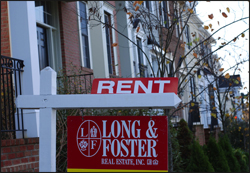Strategies to Preserve Affordable Rental Housing
In 2008, approximately one-third of the nation’s population lived in rental housing and close to 70 percent of the rental households earned less than $50,000 annually. Even with the downturn in the housing market, rental units are often the only affordable housing option available for many low- and moderate-income families. With reduced government subsidies and expired regulatory rental agreements, affordable rentals are often converted to market-rate rentals and condominiums, thus depleting our nation’s existing affordable rental housing stock. To retain existing affordable rental housing, many state and local governments are taking significant steps to stimulate change in their communities. Some of these steps involve providing financial assistance through allocation of tax credits, housing trust funds, private activity bonds, and other low-interest loan programs for multifamily housing preservation. While many of these strategies were adopted at the height of the housing bubble, they are still relevant and appropriate, especially in areas with strong markets. This article will look at some of the regulatory tools that are assisting local governments in their efforts.
Mitigating Loss of Rental Units through Condominium Conversions
 In some communities, converting rental units into condominiums is encouraged as a means of increasing homeownership opportunities. However, in high-priced real estate markets with skyrocketing housing costs, condominium conversions represent a loss of affordable rental units. To slow down this trend, two California cities, San Diego and Berkeley, have adopted regulations aimed at retaining affordable rental units. In the city of San Diego, condominium conversion projects targeting households whose earnings exceed 150 percent of the area median income (AMI) are subject to the city’s inclusionary housing requirements. In addition, conversion of rental housing projects of over 3 units in a single structure, or over 10 units in multiple structures, occupied by low- or middle-income households in the city’s Coastal Zone is prohibited, unless the units are replaced on a one-to-one basis. In some communities, converting rental units into condominiums is encouraged as a means of increasing homeownership opportunities. However, in high-priced real estate markets with skyrocketing housing costs, condominium conversions represent a loss of affordable rental units. To slow down this trend, two California cities, San Diego and Berkeley, have adopted regulations aimed at retaining affordable rental units. In the city of San Diego, condominium conversion projects targeting households whose earnings exceed 150 percent of the area median income (AMI) are subject to the city’s inclusionary housing requirements. In addition, conversion of rental housing projects of over 3 units in a single structure, or over 10 units in multiple structures, occupied by low- or middle-income households in the city’s Coastal Zone is prohibited, unless the units are replaced on a one-to-one basis.
 In the city of Berkeley, condominium conversions are limited to 100 units per year. The city also imposes a housing mitigation fee on condo conversion projects to be paid into a housing trust fund. Fees are calculated based on the difference between ownership and rental costs for a unit. If the owner or developer agrees to limit annual rent increases to tenants at the time of conversion, the city will cap the mitigation fees at eight percent of the sale price. Additionally, permanently-affordable inclusionary housing units in some multifamily buildings are exempt from the mitigation fee. In the city of Berkeley, condominium conversions are limited to 100 units per year. The city also imposes a housing mitigation fee on condo conversion projects to be paid into a housing trust fund. Fees are calculated based on the difference between ownership and rental costs for a unit. If the owner or developer agrees to limit annual rent increases to tenants at the time of conversion, the city will cap the mitigation fees at eight percent of the sale price. Additionally, permanently-affordable inclusionary housing units in some multifamily buildings are exempt from the mitigation fee.
Housing Replacement and Preservation Ordinances
Throughout the nation, a majority of low-income multifamily units are located in older buildings and receive some form of government subsidy. Implementing tools such as housing replacement ordinances and strict notification requirements can help maintain the supply of these units. The city of Burlington, Vermont requires housing units that are demolished or converted to nonresidential use to be replaced. The replacement units must remain rental or limited equity housing for a period of 10 years and must be sold or leased to low-income households.
Having lost 125,000 rental units between 1999 and 2005, the city of Chicago recently adopted an affordable housing preservation ordinance to maintain the affordability of existing low-income housing units. Chicago requires owners of federally-subsidized housing to notify the city’s Department of Housing of their intent to sell the homes or prepay the mortgage. This notification has to be provided 12 months before the affordability restrictions expire or are terminated. All such notifications and contingent sales agreements are posted on the city’s website. The Department also maintains a list of qualified developers and nonprofits that meet certain eligibility criteria laid out in the ordinance. These qualified entities are given the right of first refusal to purchase the units. The purchaser must agree to maintain or extend the affordability restrictions for a period of 10 years.
Conclusion
As the percentage of renters and median rents continues to rise (even in a downturn economy), there is growing demand for rental housing that’s affordable to low- and moderate-income families. To meet this demand, state and local governments across the nation can implement policies and regulations not only to promote new construction, but also to encourage long-term preservation of existing affordable rental units. Adopting regulatory tools such as those discussed in this article can assist localities in their preservation efforts.
Next Article Search Archives
|

